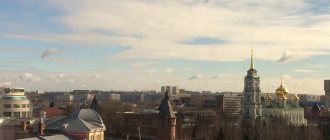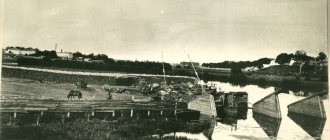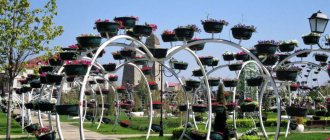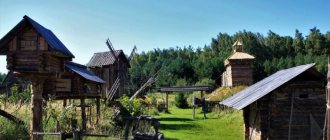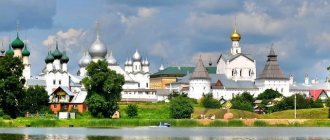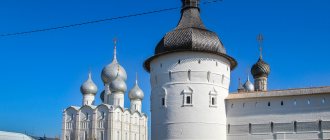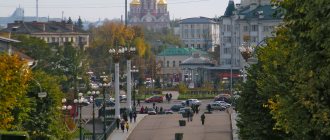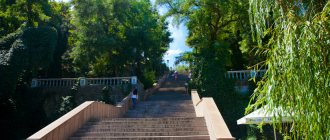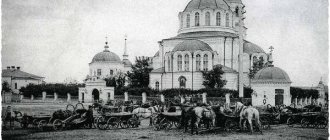Many travelers consider Kyzyl a transit point on the way to mountain passes, picturesque lakes and beautiful national parks. Stay in the capital of Tuva for a couple of days. Kyzyl also has many corners worthy of your attention.
On the central square in front of the drama theater there is a unique prayer drum and a house for it. The copper drum contains 115 million leaves on which various mantras are written.
This structure was presented to the city by monks from the Tantric monastery of Tyudmed. The parcel from distant India was gratefully received by the believers of Kyzyl.
In 2006, a drum that attracts prosperity to the family was installed in the main square. Everyone who prays and spins the drum imparts kindness and energy to those who come after them. There is often a queue of people waiting to see the prayer wheel to test the effect of the Buddhist “wheel of well-being”.
As you approach the city, pay attention to the symbol of Kyzyl, reflecting one of the activities of the local population over the centuries.
Monument to the first Russian teachers
In 2010, at the 2nd kilometer of the M 54 highway, a monument to brave teachers who came to Siberia to teach illiterate people was unveiled. Many exchanged their usual way of life and warm apartments for an unsettled life on a foreign land.
Very soon, Tyva became a second home for many teachers. Their work was not in vain. In gratitude, the Prime Minister of Tuva proposed creating this monument.
There are fountains and beautiful flower beds in the central square. There is a lot of greenery on the streets.
The city is surrounded by forests. Despite the changeable weather and rather harsh climate, the residents of Kyzyl plant trees, shrubs and thousands of flowers every year.
Tuva State Philharmonic
One of the oldest attractions in Kyzyl (see photo below) was opened on April 1, 1969. Today it is located in the building of the Kok-ool Music and Drama Theater. Six groups work here for guests, each of which is a bearer of national musical culture. But they perform not only folk music. Their repertoire includes many classical and symphonic works. Touring famous Russian dance ensembles and musical groups perform here.
The Philharmonic also has its own “Theatre of Miniatures”, a rock laboratory, and a choreographic studio for children “Sayany”.
National Museum of the Republic of Tuva
The history of the birth of the first museum on the territory of Tyva is connected with an accidental discovery discovered in 1924. Researchers found pieces of ore, clay shards, household items, and jewelry. This is how the first collection appeared, telling about the history of Kyzyl and the traditions of the indigenous population.
Now the museum occupies a spacious room. The number of exhibits is in the thousands. Museum guests will be interested in shamanic drums, national clothes, reconstructed dwellings of local peoples, figurines and painted dishes.
Address: st. Lenina, 7.
Cultural heritage
Tuvans are an ethnic group of Asian culture and bearers of such ancient arts as:
- throat singing “khoomei”;
- playing national musical instruments: byzaanchi, igil, khomus, kengirge and others;
- traditional kuresh wrestling;
- stone carving.
Agalmatolite in the hands of a Tuvan artist turns either into a flock of birds or a wild animal, or into a monster from children's fairy tales and folk legends. Due to its flexibility and ease of processing, the stone was called “chonar-dash”, translated from Tuvan as “stone that needs to be cut.”
National skills and traditions are one of the assets of the Republic of Tuva and its capital. In the historical and national museums of Kyzyl you can get closer to the culture of the Tuvan people.
Khoomei festivals in Kyzyl
Nadya Rusheva Museum
A visit to this museum is unlikely to be forgotten. The story of the talented self-taught artist Nadya Rusheva is bright, bright and tragic. Her mother is a famous Tuvan ballerina. Residents of Tyva consider Nadya their countrywoman.
The girl started drawing at the age of five. Every day, between lessons and homework, the young artist carefully drew lines and rejoiced at every successful stroke. Nadya Rusheva's works are not childishly deep and meaningful.
Over the 17 years of her life, the girl created beautiful illustrations for dozens of books. Unfortunately, her young life was cut short due to a cerebral hemorrhage.
Address: st. Lenina, 7.
Kurgan Arzhaan-1
The mound is a royal burial place of the Scythian period of the 8th-7th centuries BC. This is the largest such structure in northern Asia. Its excavations were carried out in the 70s of the last century. A grandiose wooden structure with a log ceiling was discovered - a central log house and 70 secondary log buildings. Its construction took approximately 5 thousand massive larch logs.
The king and queen were buried in the central frame of the mound, and around them were 16 people and more than one and a half hundred horses. Gold and silver jewelry and unique items were found.
Museum of the History of Political Repression
In the capital of Tyva, as in many cities of Siberia and the Far North, there are exhibitions dedicated to the best representatives of the intelligentsia repressed by the Stalin regime. The museum is located in the same building where the NKVD commandant's office was located in the 30s.
The museum contains documents, photographs, newspaper clippings, and biographies of political exiles. It is useful to visit the museum of political exile to understand the terrible essence of Stalin’s times, when any dissent was punishable by prison or execution.
Address: st. Komsomolskaya, 5.
Kyzyl is a unique city in terms of religious tolerance. Many residents profess Buddhism. No less fans of ancient shamanism. There are also Orthodox believers.
People of all religions have their own temple. There are no conflicts based on religion. Tourists will be interested in the original Buddhist temple, Orthodox cathedral and shamanic center.
Crime capital
Despite its multinational composition, Kyzyl is not a place of ethnic strife. The bulk of crimes committed in the Tuvan capital are of a “domestic nature.” Fights occur quite often, including fatal ones, which, for the most part, occur after excessive drinking of alcohol. Intoxicated Kyzyl residents grab a knife, thus trying to resolve family and everyday conflicts, quite often caused by jealousy. Thus, in 2012, the Kyzyl Department of Internal Affairs recorded 2,105 crimes:
- Severe – 768;
- Thefts – 637;
- Distribution and use of drugs and potent substances – 485;
- Those with an economic focus - 72;
- Committed by minors – 98.
As noted by the Department of Internal Affairs of the city of Kyzyl, the number of crimes in the city increased by 5.4% compared to the level of 2011. The overall detection rate was 73%.
The most “terrible” year in terms of the number of murders committed in this millennium was 2003, when 557 particularly serious crimes occurred (323 cases of intentional infliction of grievous bodily harm causing death and 234 murders). The high wave of murders lasted in the Tuvan capital for another two years (2004-2005), after which law enforcement agencies in Kyzyl noted a decrease in these “terrible indicators.” However, if we take the total number of serious crimes based on the number of residents of the republic, we can note that Tuva is ahead of the Russian average:
- in murders 5 times,
- intentional infliction of harm to health causing death – 3 times.
- for rape - 3 times.
And given the fact that 1/3 of the total population of the republic lives in Kyzyl, it is easy to guess where the center of crime is concentrated.
The last “high-profile case” discussed by all residents of Kyzyl was the murder of the best athlete of Tuva of the 20th century in khuresh wrestling - 24-year-old Chechen-ool Mongush. Who is charged? The servant of the people, former deputy of the Supreme Khural of Tuva, Roman Mongush, was found guilty. Several other high-profile cases this year involved the rape of minors (children aged 7-12 years), the beating of suspects by police officers, and the discovery and closure of 17 underground clubs with slot machines.
Kyzyl residents also remember the terrible tragedy that took place 11 years ago, when two townspeople were brought to the sacred spring with healing water - Kundustug Arzhaan and brutally killed, inflicting about 50 knife wounds on one of them, and the second was completely deprived of his head. The criminals were captured and convicted, but they will soon be released again and will probably return to their hometown. What awaits their next victim when the criminals attack someone else in their drunken stupor? The burning question: “How to stop the unmotivated murders that happen so often in Kyzyl?” - remains unanswered for now.
Cathedral of the Resurrection of Christ
The main cathedral of the Tuva diocese is located in the new district of Kyzyl next to the television center. Construction work on the construction of the temple lasted more than seven years. The construction was either frozen or the work continued again.
Now the majestic temple is richly decorated inside. The cathedral looks especially beautiful in winter. The temple looks magnificent against the backdrop of snow-covered expanses.
Address: st. Moskovskaya, 7.
Lake Dus-Khol
This lake is also called Svatikovo. It is located in Tandinsky kozhuun, 45 km from Kyzyl. The area of the lake is only 0.55 square meters. km. It has an oval shape and relatively flat banks; there is no woody vegetation.
There are several sanatoriums on the lake, and a camping base is also organized. It is popular for recreation among residents of the east of the republic. More than a thousand people come here in the summer. The lake attracts with its healing water - its properties are similar to the water of the Dead Sea. This lake is so salty that you can easily lie on its surface.
Buddhist Temple Tsechenling
The religious building appeared on the map of Kyzyl in 1999. After the era of “developed socialism” not a single temple survived in the city. All religious buildings were destroyed by the Bolsheviks. At that time, there were Buddhist temples only in St. Petersburg and Ulan-Ude.
The construction turned out to be solemn and elegant. The first floor was reserved for representatives of the Dalai Lama. On the second floor there is a prayer hall with gilded burkhans, a beautiful altar and images of the great Buddha.
Address: st. Shchetinkina-Kravchenko, 1.
Embankment
Four years ago, the city embankment changed beyond recognition. Now this pearl of the capital of Tuva is not just a beautiful place, a landmark of Kyzyl, but also a recreation area loved by both local residents and guests of the city.
Once upon a time, a well-known granite boulder with the inscription “Center of Asia” was installed here. Today, after the completion of the repair work, it, ennobled, returned to its rightful place.
Shamanic clinic
In front of the shaman center there are two large yurts. It is impossible to miss this attraction. There are currently seven shamans working at the clinic.
The secrets of ancient methods used by shamans are passed down from generation to generation. Do you dream of learning how shamans work? The doors of the center are open to everyone. This shamanic clinic is considered one of the best in Tyva.
Address: st. Red Partisans, 18.
Aldyn-Bulak
The name of this ethnocultural complex is translated as Golden Spring. It is located in the Tandinsky district on the banks of the Yenisei. The project of the complex is a model of the Universe. The role of the Sun and planets is played by yurts, which are located according to Feng Shui.
The complex was opened in March 2011 with the aim of reflecting the national color of Tuva. It contains several ritual sites, including the Shaman's Place, the Heavenly Gate (Buddhist arch), the Sulda banners (worshipped by men), the Tojin tents, and the fire pit. There are also yurts for living, a parking lot, a sports ground, viewing gazebos, a bathhouse and a sauna. The yurts are decorated in the style of traditional Tuvan life and the wealth of Scythian times.
Arzhaan Choigan
This healing source is difficult to access, but the most famous. It is located in the extreme northeast of Tuva (Eastern Sayan). Mineral waters flow out along the banks of Arzhan-Khem, a small mountain river, the right stream of Izig-Sug.
The number of indications for the use of this healing source is large. The composition of its waters is close to the Kislovodsk waters.
Sacred Mountain Dogee
On the right bank of the Yenisei in Kyzyl, Mount Dogee proudly rises. More than one kilometer high, one is part of the Uyuk ridge system. Before Soviet power, on this mountain, the Tuvan people performed sacred rites and prayed. But, despite the fleeting history of the Republic of Tyva, the mountain remains one of the main tourist centers of the republic.
Many visitors flock here to admire the panorama of the city, the beauties of Biy-Khem and Kaa-Khem. Recently, many sports events have been held, races and various social events have been organized. Getting to the foot of the mountain is not difficult; tourist buses and public transport run regularly.
Lake Shara-nur
The object is often called Yellow Lake. It is located in Tes-Khem kozhuun, just 5 km from the Mongolian border. The lake is called Yellow because of the mass of buttercups blooming on its shore.
The lake is located in the mountains, but has a shallow depth, so it warms up quickly in the summer. People are attracted here not only by warm water and nature, but also by healing mud. It contains many mineral components that are especially beneficial for the cardiovascular system, skin and musculoskeletal system.
Another interesting fact about the lake for tourists is the legends. According to one of them, the hunter saw three swans who turned into beautiful girls. He stole clothes from one of them, and she remained a human on earth, fell in love with him and gave birth to many children - the ancestors of the Buryat people.
Obelisk "Center of Asia"
Obelisk "Center of Asia"
Kyzyl
In Kyzyl there is a geographical point that is considered to be the center of Asia. It was calculated by travelers in the 19th century, and modern scientists confirm their calculations. Researcher Vsevolod Rodichev wrote about this place back in 1910: “In the 90s, however, an English traveler came to Uriankhai with the special purpose of seeing the center of Asia, which, according to his definition, was located near the estate of G.P. Safyanova Saldam, on the Yenisei." The small column that marked the place in those years has not survived to this day. Instead, an obelisk was erected in 1964 to commemorate the 20th anniversary of Tuva’s entry into the Soviet Union. Until 1944, the Tuvan People's Republic was an independent state, and since 1941 it was the first ally of the USSR in the war against Nazi troops. The Tuvans provided the Soviet army with 50 thousand horses, the entire gold reserve of the republic, and supplied the troops with food and warm clothing made of leather and fur.
The obelisk project was prepared by Tuvan sculptor Vasily Demin. A monolithic concrete globe and a triangular 12-meter spire were installed on the pedestal. On the globe, the center of Asia was marked with a gilded stone, and the Republic of Tuva was covered with precious and semi-precious stones. However, the treasures were soon plundered by vandals.
The obelisk acquired its modern appearance in 2014. The new memorial sign repeats the outlines of the previous one - the spire and the globe remain the central element of the composition. However, this time the globe is supported by three fabulous Arzylan lions, and the spire is crowned with the figure of a deer. And on the alley near the obelisk, 12 figures were installed - totem animals of the eastern calendar.
Mugur-Sargol and Mugur-Sargol sanctuary
This tract is difficult to access and is located on the banks of the Ulug-Khem. The petroglyphs (pisanitsa) of this place date back to the Bronze Age. There are many masks, images of chariots, and wild ungulates carved into the rock. There are about 250 drawings in total.
The Sayano-Shushenskoye reservoir was supposed to hide the petroglyphs, but 50 slabs survived. They were taken to Kyzyl.
Kyzyl on the map of Russia: geography, nature and climate
Kyzyl is one of the most inaccessible cities in Russia geographically. It can only be reached by car or plane. And if you want to understand Kyzyl, it is wiser to choose the first method of travel. After all, this is the only way a traveler will get acquainted with the mighty taiga, hear the powerful chants of mountain rivers and see with his own eyes countless passes. The city is nestled in the Tuva Basin, right at the confluence of the Big and Small Yenisei. Looking at the map of Kyzyl from a satellite, it is easy to notice that the settlement seems to be “stuck” to the left bank of the Upper Yenisei. There is an elevated terrain, an abundance of pure mountain springs and waterways, and taiga forests.
The city is surrounded by the Sayan Mountains. Mountains and hills give way to steppe, having a direct impact on the climate:
- a long and rather harsh winter with little snow (average air temperature in January is -27-300C);
- short spring of several calendar weeks, comes slowly (average air temperature in May is +370C);
- fast-growing summer with long droughts (average temperature in July +400C).
In summer, dust storms and hurricanes are a common occurrence. But local residents do not enjoy the warm rays of the sun for long. Frosts begin already in mid-September. The air temperature at night drops to -100C with a daytime temperature of +31-370C. The climate of Kyzyl is equated to the climatic conditions of the Far North. Often in winter here the thermometer needle drops to -510C. Frequent earthquakes shake the city's territory. But the real concern is the Yenisei during the thaw period. Spring floods are also a common occurrence here.
Cheder Resort
The object is located within the Kyzyl kozhuun. Tourists are attracted here by medicinal table waters, brine (a solution of highly concentrated salts) and mud. The salinity of the lake is close to 200%.
The depth of the lake is only 1.5 m, and the area is 5 square meters. km. The reservoir is attractive not only for its healing properties, but also for its reddish tint. Salt deposits are clearly visible along the shores of the lake.


